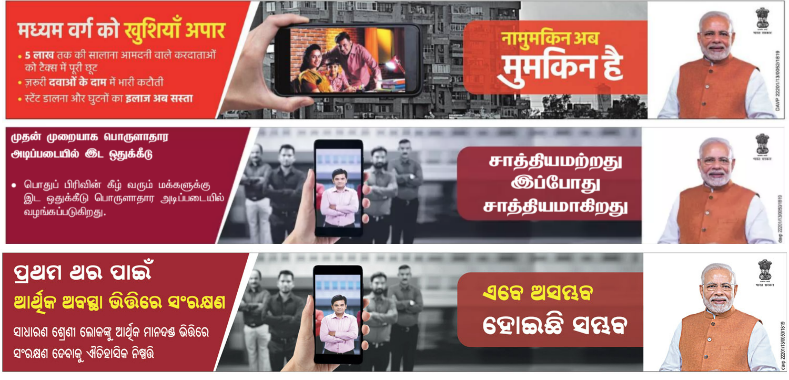
We’re perhaps witnessing the early days of the equivalent of ‘Abki Baar Modi Sarkar’, with ‘Namumkin Ab Mumkin Hai’.
The BJP started carpet-bombing this slogan on print media starting yesterday. But, unlike ‘Abki Baar Modi Sarkar’ which was launched, released and bankrolled by BJP, the party, this campaign has been bankrolled by the Indian Government… which is… BJP!
The ads have been released by DAVP (Directorate of Advertising and Visual Publicity), the nodal agency of the Government of India for advertising by various Ministries and organizations of Government of India. In a way, this is the Government of India helping Modi come back to power. BJP used the ‘India Shining’ campaign for the 2004 elections in a similar manner.
It’s possible that BJP, the party, removed from the Government of India, may release a separate campaign that puts Modi up front, like ‘Abki Baar’, closer to the elections.
Take a look at the sheer range of the slogan usage across yesterday and today, in multiple languages.

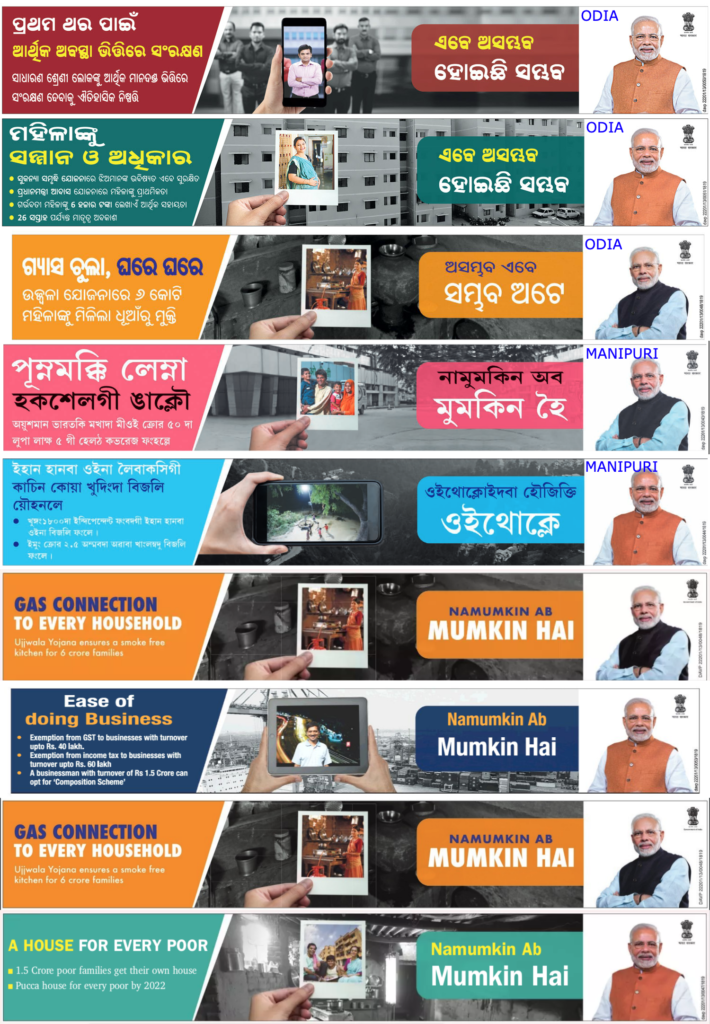

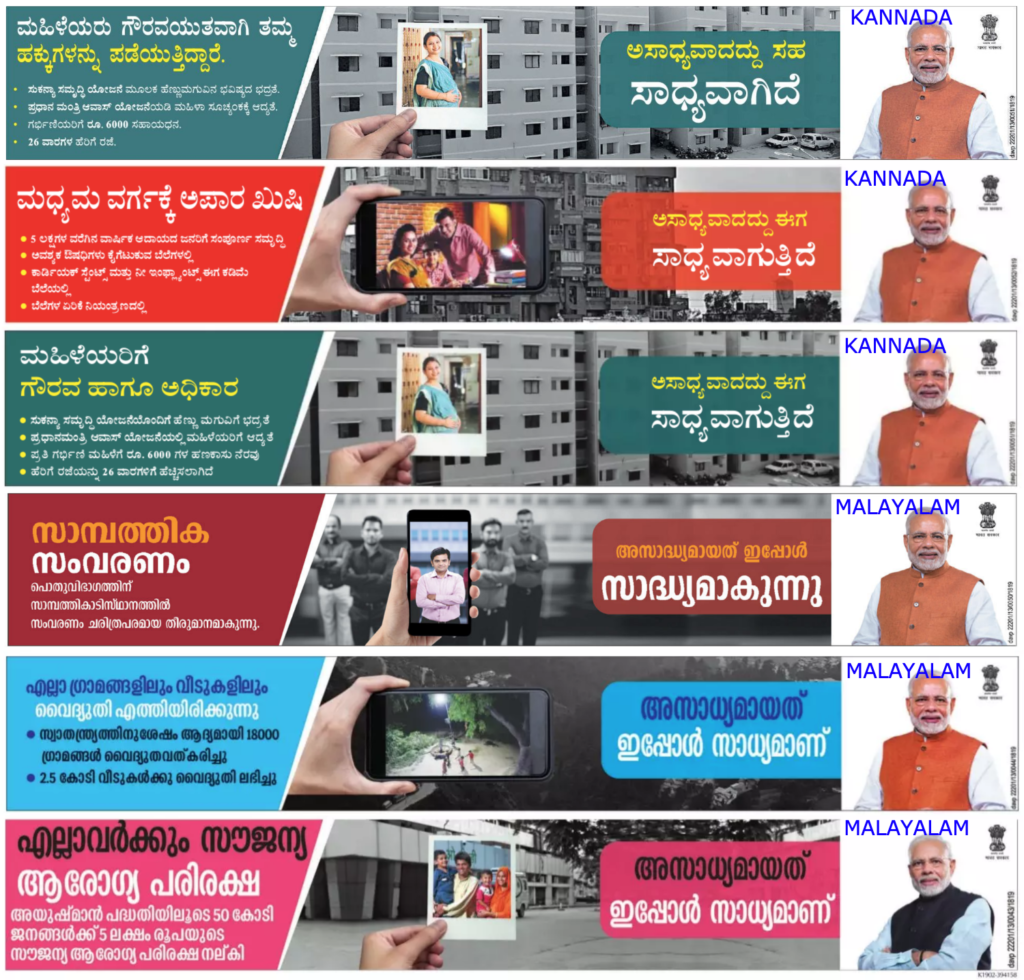
A few interesting observations on this slogan and its usage.
[1] The ‘Namumkin Ab Mumkin Hai’ slogan doesn’t seem to have the powerful ring of ‘Abki Baar Modi Sarkar’. The name Modi is missing in the new slogan and I don’t know whether it is intentional or incidental. The name matters because he IS the face of the re-election campaign.
[2] Would BJP supplement the Batman (‘Abki Baar Modi Sarkar’) with the equivalent of an ‘Achche Din’ Robin? Let’s wait and watch.
[3] ‘Namumkin’ sounds quite a mouthful! I was just wondering – is there a different word in Hindi that would be more familiar to Hindi-speaking audiences to denote impossible and possible? Like Anhonee and Honee? Considering those 2 words are part of an iconic song from Amar Akbar Anthony, would those be easier to remember?
There’s also a famous Doordarshan TV series from the 90s using those words, incidentally – Honee Anhonee 🙂 Is it that Honee and Anhonee has a more unnatural/natural association than simply possible and impossible
[4] Since BJP has carpet-bombed the caption in multiple languages, the use of regional languages raises a lot of interesting points.
For example, the Tamil version has 2 variants!! Usually, when a brand creates a slogan, it is used as-is, for maximum impact over a period of time. The Tamil has 2 versions with minor variation.
One goes, “Saadhdhiyamillaadhadhu indru saadhdhiyamaanadhu” – meaning, “What was impossible has today become possible”.
The other version is, “Saadhdhiyamatradhu ippodhu saadhdhiyamagiradhu” – meaning, “What was impossible has now been made possible”.
Very subtle difference in the tense, and I wonder if it tied to the success being associated with each. The former is about ease of doing business, while the latter is about reservations. From that point of view, there is no pressing need to vary the slogan since both successes are being touted as being impossible earlier, and now made possible.
Did the creative team really think this through when they coined the Tamil version’s 2 variants, I wonder
[5] Not just Tamil. While my reading knowledge of other Indian regional languages (barring Hindi) is abysmal, I can notice minor differences in the text used in (using simply the shapes of text),
- Telugu (observe Telugu 1 vs. Telugu 2, 3, and 4)
- Kannada (observe Kannada 1 vs. Kannada 2 and 3)
- Malayalam (observe Malayalam 1 vs. Malayalam 2 and 3)
- Odia (observe Odia 1 and 2 vs. Odia 3)
- Manipuri (observe Manipuri 1 vs. 2)
I cannot read them (so apologies if I got this wrong)… so all I can find is that there ARE some differences. Please do let me know the kind of difference that exists if you can read one or more of those languages.
[6] All these ads are from a range of newspapers (e-paper versions) across India. The effort to take multiple language versions on the same day is very impressive considering corporate brands do the same, but with far less focus on these many languages! It’s a question of the target audience, I understand, and for BJP, the entire country is their target audience. And the fact they actually worked to get languages like Odia, Manipuri etc. that I don’t usually see in pan-India brand advertisements is mighty impressive. That too, on the same day, to ensure consistent pan-India communication!
[7] Intriguingly, even the English newspapers have been given the Hindi slogan written in English!! The rest of the text in the advertisement is in English, but the slogan has not been used as ‘The impossible is now possible’! This is an interesting design/communication choice, to completely avoid the English version of the slogan whereas, in corporate India, brands start thinking in English as far as slogans are concerned and then translate/transliterate it to regional Indian languages!
UPDATE: February 23, 2019:
[8] BJP/Indian Government was running a series of full-page ads in English around Indian Railways across this week. Today’s full-page ad has an addition that looks almost like an after-thought. As if someone remembered that the Namumkin campaign has started and they have forgotten to add it to this campaign too!

There is also little consistency in the way the slogan is being used even within English. In the same newspaper(s) that has the Indian Railways ad, there is the smaller strip ad for Namumkin.

What’s the difference? The strip
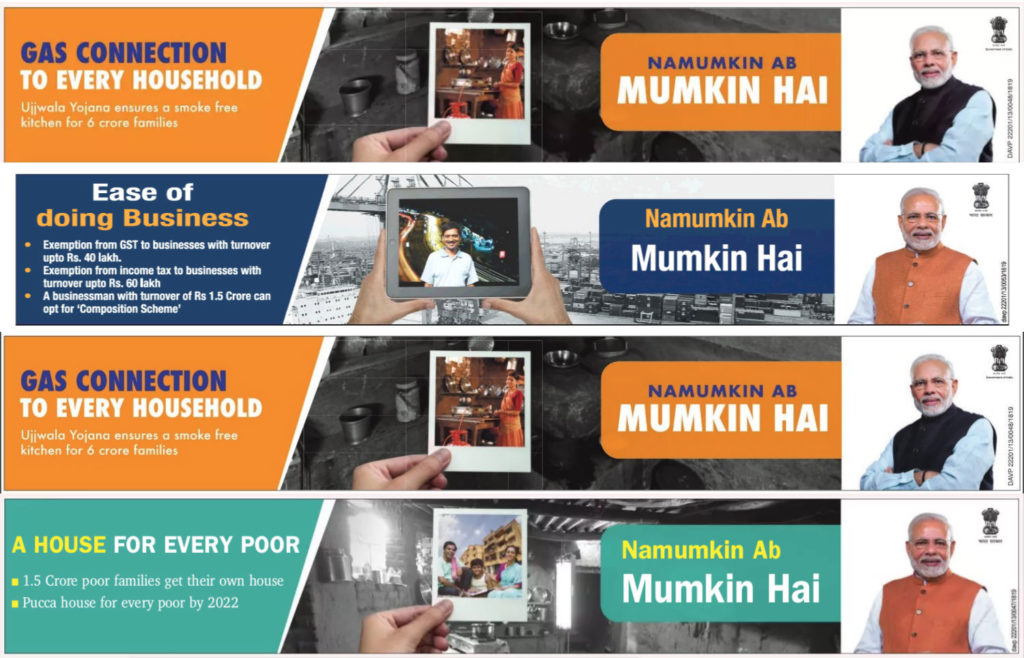
And yes, that 7th observation continues to intrigue me. These are ads in English newspapers. And it clearly looks like BJP/Government does not want to venture into an English version of the slogan at all. So, for all regions (including non-Hindi states), they use the Hindi slogan, written in English!
[9] The Tamil use of the slogan continues to be riddled with inconsistencies! These are from today’s newspapers.
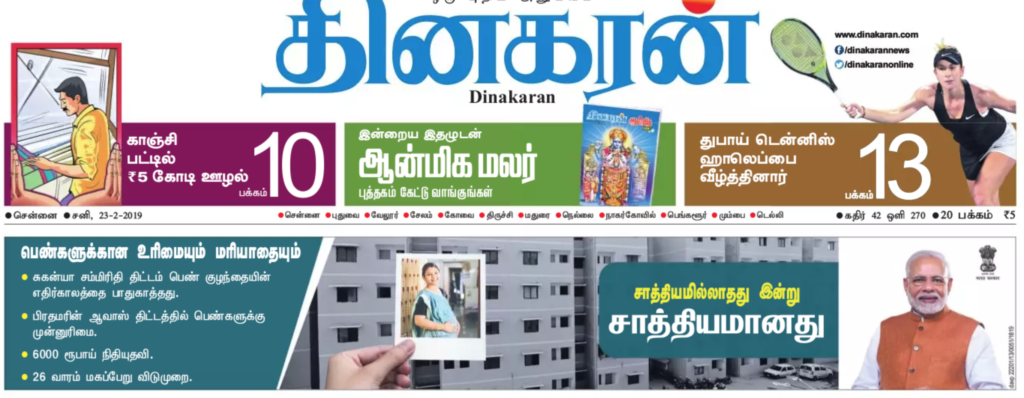

In Dinakaran, the slogan is written with 2 words in the first line and one in the 2nd. In Dinamani, it’s one word in first line and 2 in the second! This all makes it look like multiple agencies handling the slogan the way they want, with zero consistency. This is quite unlike Modi’s campaign style from earlier days.
